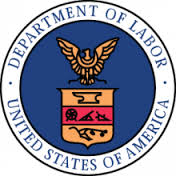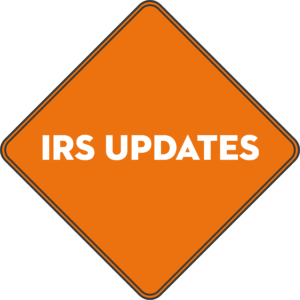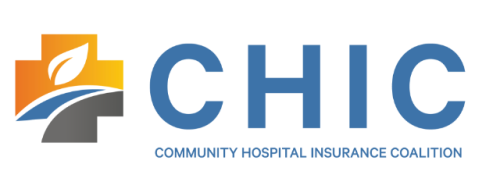DOL Releases Final Rule Expanding Association Health Plans
ACA Affordability Percentages Will Increase for 2019
IRS Announces HSA Limits for 2019
Did You Know: Trump unveils outline to lower prescription drugs
DOL Releases Final Rule Expanding Association Health Plans

The U.S. Department of Labor (DOL) has issued a final rule expanding the opportunity of unrelated employers of all sizes (but particularly small employers) to offer employment-based health insurance through Association Health Plans (AHPs). Significantly, the final rule applies “large group” coverage rules under the Affordable Care Act (ACA) to qualifying AHPs.
The final rule confirms that AHPs may be formed by employers in the same trade, industry, line or businesses, or profession. They may also be formed based on a geographic test such as a common state, city, county or same metropolitan area (even if the metropolitan area includes more than one State).
The final rule contains staggered effective dates:
- All associations (new or existing) may establish a fully insured AHP beginning September 1, 2018.
- Existing associations that sponsored an AHP on or before the date the final rule was published may establish a self-insured AHP beginning January 1, 2019.
- All other associations (new or existing) may establish a self-insured AHP beginning April 1, 2019.
We will expand upon these issues in future alerts. In the meantime, highlights of the final rule are as follows:
- Existing bona fide associations may continue to rely on prior DOL guidance. The final rule provides an additional mechanism for AHPs to sponsor a single ERISA-covered group health plan.
- AHPs may self-insure under the final rule; however, the DOL anticipates that many AHPs will be subject to state benefit mandates. States retain the authority to adopt minimum benefit standards, including standards similar to those applicable to individual and small group insurance policies under the ACA, for all AHPs.
- The primary purpose of the association may be to offer health coverage to its members; however, it also must have at least one substantial business purpose unrelated to providing health coverage or other employee benefits.
- A “substantial business purpose” is considered to exist if the group would be a viable entity in the absence of sponsoring an employee benefit plan.
- The employer members of an association must control the functions and activities of the association, and the employer members that participate in the group health plan must control the plan. Control must be present both in form and in substance.
- Whether “control” exists is a facts and circumstances determination. The DOL considers the following factors to be particularly relevant for this analysis: (1) whether employer members regularly nominate and elect the governing body of the association and the plan; (2) whether employer members have authority to remove a member of the governing body with or without cause; and (3) whether employer members that participate in the plan have the authority and opportunity to approve or veto decisions which relate to the formation, design, amendment, and termination of the plan, for example, material amendments to the plan, including changes in coverage, benefits, and premiums.
- The AHP must limit enrollment to current employees (and their beneficiaries, such as spouses and children), or former employees of a current employer member who became eligible for coverage when the former employee was an employee of the employer.
- An AHP may not experience-rate each employer member based on the health status of its employees; however, an AHP may charge different premiums as long as they’re not based on health factors. For example, employees of participating employers may be charged different premiums based on their industry subsector or occupation (e.g., cashier, stockers, and sales associates) or full-time vs. part-time status.
- The final rule reduces the requirement for working owners. To be eligible to participate they must work an average of 20 hours per week or 80 hours per month (the proposed rule required an average of 30 hours per week or 120 hours per month).
- All AHPs are Multiple Employer Welfare Arrangements (MEWAs) and will need to ensure compliance with existing federal regulatory standards governing MEWAs (such as M-1 filings). The Department intends to reexamine existing reporting requirements for AHPs/MEWAs, including the Form M-1 and possibly the Form 5500, and may be asked to propose class or individual prohibited transaction exemptions for AHPs that want to use affiliates to serve as their administrative service providers or act as issuers providing benefits under the AHP.
- States can continue to regulate AHPs.
- AHPs are subject to the disclosure requirements of Title I of ERISA (e.g., summary plan descriptions, summary of material modifications, etc.) and Summary of Benefits and Coverage (SBC) requirements.
- The Mental Health Parity and Addiction Equity Act of 2008 (MHPAEA), which applies to employers with more than 50 employees on business days during the preceding calendar year, would apply to an AHP so long as the number of employees employed in the aggregate during the preceding calendar year by the employer members of the bona fide group or association.
- The DOL anticipates issuing future guidance on the application of COBRA to AHPs.
- The rule does not address the liability of the respective parties to the AHP for violations of the nondiscrimination provisions in the rule, general ERISA reporting and disclosure requirements and fiduciary rules, Code section 4980H (employer mandate) and the related Code sections 6055 and 6056 reporting requirements, Form W-2 reporting, COBRA compliance, and “all of the other responsibilities that come with the maintenance of a single large employer plan.” These Code provisions are under the jurisdiction of the IRS and Treasury and the rule refers stakeholders to the relevant Code sections and guidance thereunder.
- 9.86 percent of the employee’s household income for the year, for purposes of both the pay or play rules and premium tax credit eligibility
- 8.3 percent of the employee’s household income for the year, for purposes of an individual mandate exemption (adjusted under separate guidance)
- Family – $7,000
- Single – $3,500
- Family – $13,500
- Single – $6,750
- Improved competition
- Better negotiation
- Incentives for lower list prices
- Lowering out-of-pocket costs
Next Steps
The release of final regulations expanding the availability of AHPs will come as welcome relief to small employers, who have been subject to strict insurance mandates and market reforms under the Affordable Care Act. The final rule is intended to level the playing field and allows small employers to band together by common geography or industry to purchase “large group” insurance policies, which are subject to fewer ACA mandates and have greater flexibility in plan design than small group plans, which generally must offer coverage in all ten essential health benefit categories. However, States will continue to be able to regulate AHPs, so it remains to be seen whether some of the flexibility gained under the final rule will be curtailed by the adoption of minimum benefit standards by States.
The rule also enables AHPs to self-insure, which provides an additional avenue for cost-savings by participating employers. While the impact on the ACA Marketplaces and the individual and group insurance markets is unclear and likely will not be felt immediately, opponents of the rule have raised concerns ranging from destabilization of the individual and small group markets (due to AHPs being marketed toward younger, heathier individuals) to consumer protection issues, including insolvency and fraud.
Employers should work closely with qualified ERISA counsel and their trusted advisors when evaluating whether to join an AHP and to ensure that compliance obligations are being met.
ACA Affordability Percentages Will Increase for 2019

The IRS recently issued a Revenue Procedure to index the contribution percentages used to determine the affordability of an employer’s plan under the Affordable Care Act (ACA).
These updated affordability percentages are effective for taxable years and plan years beginning Jan. 1, 2019. They represent a significant increase from the affordability contribution percentages for 2018.
As a result, some employers may have additional flexibility with respect to their employee contributions for 2019 to meet the adjusted percentage.
Affordable Coverage Test
For plan years beginning in 2019, employer-sponsored coverage will be considered affordable if the employee’s required contribution for self-only coverage does not exceed:
This adjustment means that employer-sponsored coverage for the 2019 plan year will be considered affordable under the employer shared responsibility rules if the employee’s required contribution for self-only coverage does not exceed 9.86 percent of the employee’s household income for the tax year.
The 2018 affordability percentage for the pay or play rules and premium tax credit eligibility was 9.56 percent. The 2018 percentage for the individual mandate exemption was 8.05 percent.
For more guidance on this and other compliance topics, contact HealthSure Insurance Services, Inc. today.
IRS Announces HSA Limits for 2019

The IRS recently announced that limits for HSA contributions will increase for 2019. The HDHP maximum out-of-pocket limits will also increase for 2019. The HSA contribution limits will increase effective Jan. 1, 2019, while the HDHP limits will increase effective for plan years beginning on or after Jan. 1, 2019.
HSA Contribution Limit
HDHP Maximum Out-of-pocket Expense Limit (deductibles, copayments and other amounts, but not premiums)
Because the cost-sharing limits for HDHPs will change for 2019, employers that sponsor these plans may need to make plan design changes for plan years beginning in 2019.
The Trump administration unveiled an outline for potentially lowering the price of prescription drugs.
The blueprint identifies four key areas of focus:
Stay tuned for updates later in the year.



